Step-by-Step Guide to Test an Ignition Coil
How to test an ignition coil
A malfunctioning ignition coil can lead to poor engine performance, misfires, or even complete engine failure. Testing an ignition coil is essential for diagnosing issues related to engine performance. This article will cover the principles of ignition coil operation, common symptoms of a faulty coil, and step-by-step procedures for testing an ignition coil using various methods.
Start with a visual examination of the ignition coil
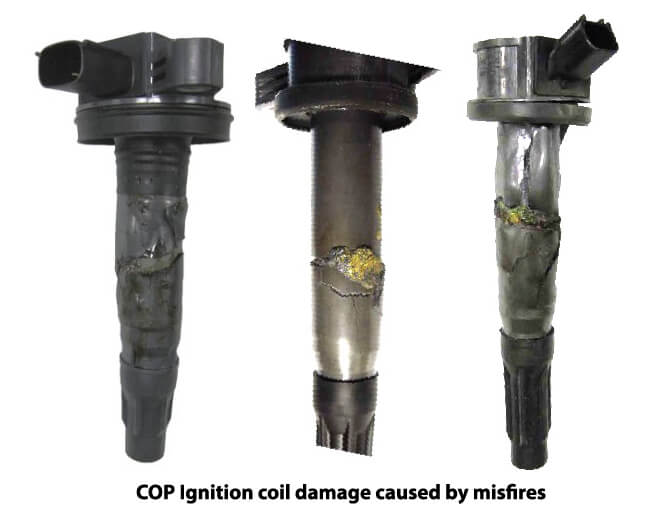
These COP ignition coils show evidence of fire-through where the high voltage fired right through the side of the coil instead of jumping a worn-out spark plug gap
Before you start electrical testing on an ignition coil, do a with visual inspection. Some problems are so obvious with a visual inspection that there’s no need to even begin electrical tests. Look for cracked plastic, a damaged electrical connector, and evidence of fire-through, like burn marks and melted plastic.
The ignition coil damage shown here is often caused by driving with worn-out spark plugs or worn spark plug wires.
When the spark plug gap erodes to the point where the spark can no longer jump the gap, that electrical energy instead finds its way to ground by firing right through the plastic housing directly to ground. If the vehicle has worn spark plug wires, the high voltage will jump to ground right through the spark plug wire insulation or through the coil tower itself. If you see any cracks or fire-through, that coil must be replaced.
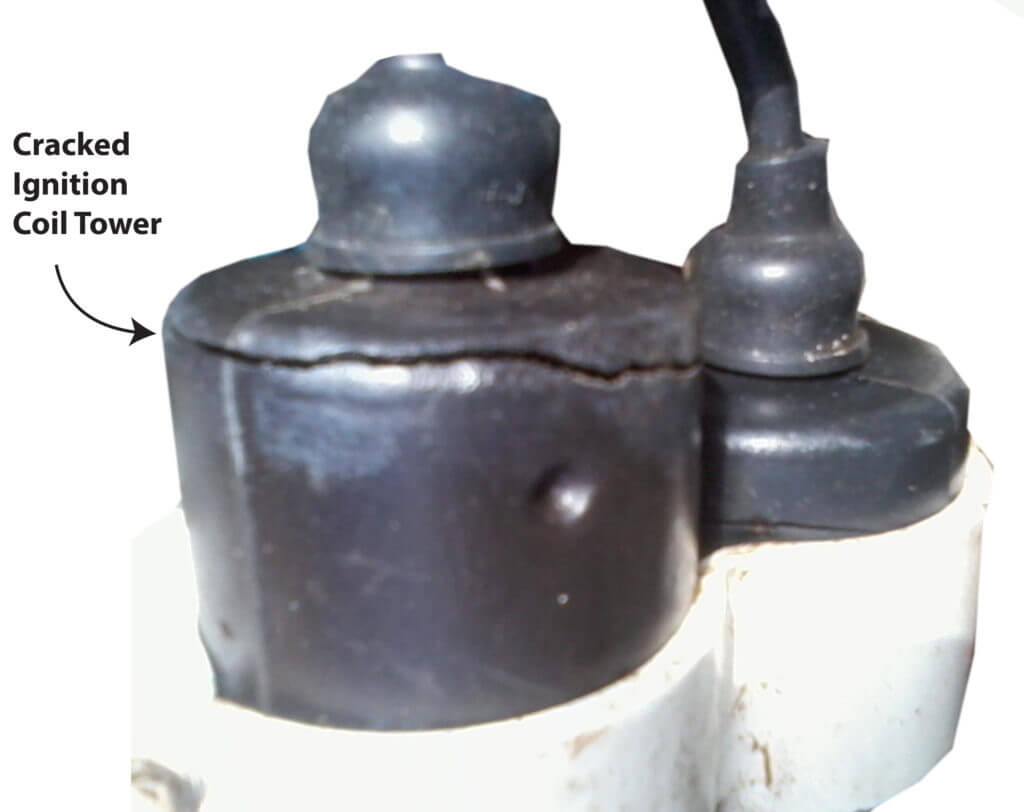
Test for power and ground at the ignition coil connector
Using a multimeter set to DC volts, check for power to the ignition coil with the key in the RUN position. Then, check for good ground in the connector. You should see battery voltage on the power terminal.
Testing the ignition coil resistance with a multimeter
Disconnect the coil’s electrical connector. Set your meter to the ohms scale (200 ohms range). Connect one-meter lead to the positive terminal on the coil and the other to the ground terminal of the primary winding. Compare the resistance readings to those shown in the shop manual. This reading will tell you if the insulation on the winding has broken down. Perform the same procedure on the secondary windings (if available). The primary winding for a typical coil pack is from 0.4 to 2 Ohms, while the secondary winding is at 6,000 to 10,000 Ohms.
Test an ignition coil for shorts
Leave the meter in ohms and disconnect the connectors to the coil. Check for a short to ground by touching a meter lead to the positive terminal on the primary winding and the other to a ground spot on the coil.
Testing a coil with a spark tester
There are two types of ignition coil testers for conventional, DIS and COP ignition systems where the coil isn’t mounted in the cylinder head; in-line and open air.
In-line ignition coil tester
In-line ignition coil testers install in between the 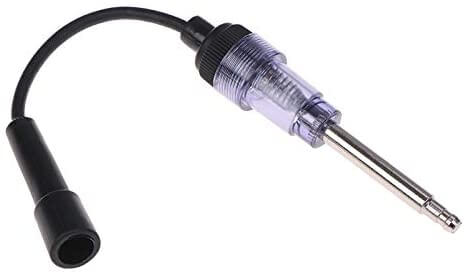 spark plug wire and the spark plug. It’s far more reliable than the open air tester because it’s testing the coil under actual engine running conditions.
spark plug wire and the spark plug. It’s far more reliable than the open air tester because it’s testing the coil under actual engine running conditions.
Remove the spark plug wire from the spark plug and install the tester. Then start the engine and look for a consistent spark.
Open-air ignition coil tester
An open-air tester connects to the spark plug wire and ground. In adjustable open-air ignition coil testers, you set the tester to the recommended spark plug gap and crank the engine. The spark should jump the gap. 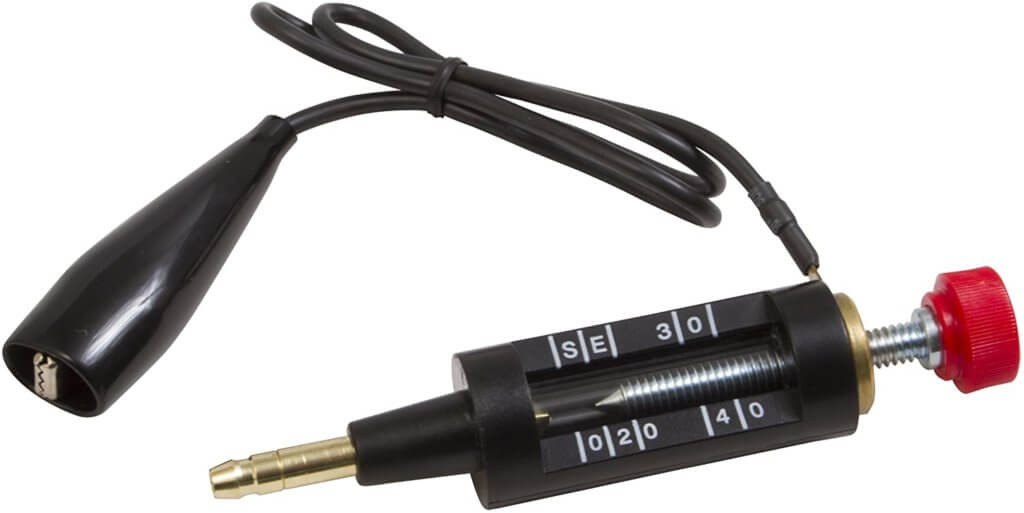 That confirms that the ignition coil isn’t dead. But it doesn’t confirm that the coil works when the cylinder is under pressure. The air/fuel mixture and compression in the cylinder create much more resistance to ignition. An ignition coil that fires fire in open air may not fire the spark plug in actual running conditions.
That confirms that the ignition coil isn’t dead. But it doesn’t confirm that the coil works when the cylinder is under pressure. The air/fuel mixture and compression in the cylinder create much more resistance to ignition. An ignition coil that fires fire in open air may not fire the spark plug in actual running conditions.
Testing coil on plug ignition coils while still in the vehicle
You can check a COP-style ignition coil for power, ground, and primary coil resistance, but you’ll need an inductive “noid” tester to check for spark operation while the engine is cranking or running. Simply touch the sensor to the top of the coil and watch the flashing LED on the tool.
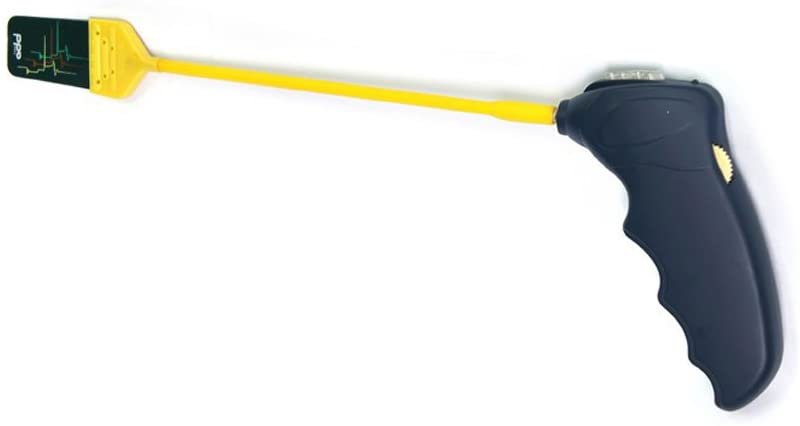
Symptoms of a Faulty Ignition Coil
A faulty ignition coil can manifest in several ways:
• Engine Misfires: One of the most common symptoms. The engine may run rough, especially at idle or under load.
• Difficulty Starting: The engine may crank without starting or take longer than usual to start.
• Poor Fuel Economy: A malfunctioning coil can lead to incomplete combustion, reducing fuel efficiency.
• Check Engine Light: The onboard diagnostics system may detect misfires and trigger the check engine light.
©, 2020 Rick Muscoplat
